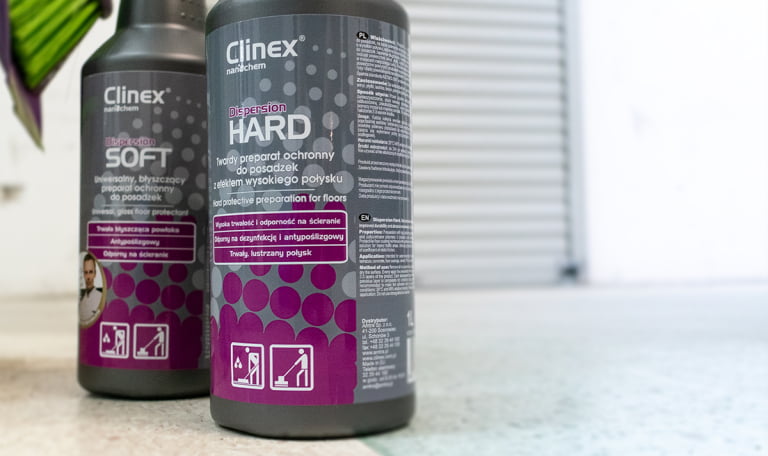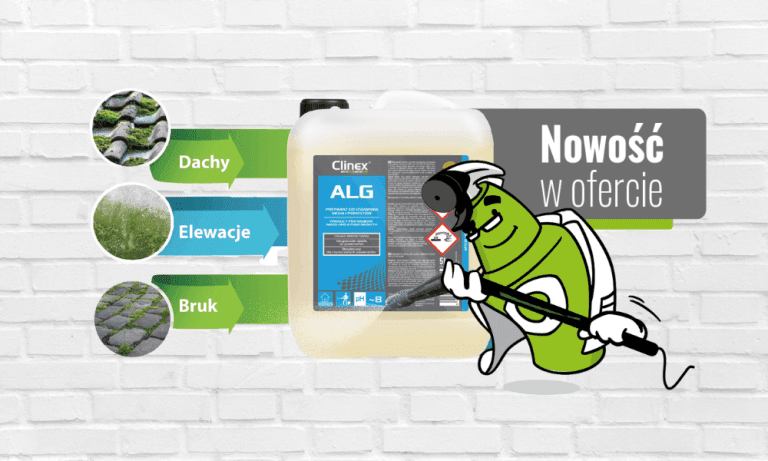Household chemicals have been evolving for years. The composition of chemical products is changing drastically. It happens more and more often that we want to obtain a product that is not only effective, but also safe to use. Is it possible ? Well, yes. These are the properties of modern polymers. What exactly are they and what do they offer that makes cleaning products based on them so sought after? This article will describe the properties of cleaning products with active polymers.
What are polymers used for?
Scientists have been working on innovative raw materials for years, e.g. detergents with a low content of unreacted substrates, thanks to which we can reduce the amount of raw material in the recipe without reducing the effectiveness of the product. All kinds of polymers, a small amount of which can change the effectiveness of recipes by up to several dozen percent. Co-surfactants whose task is to increase the solubility of ingredients contained in recipes, super wetting agents that improve the effectiveness of products and many other effective additives.
The properties of active polymers make the detergent an excellent agent for cleaning the surfaces for which it was designed. The content of polymers makes the agent highly effective, cleans thoroughly and leaves surfaces less absorbent for newly deposited dirt. Moreover, polymers perfectly preserve the surfaces to which they are used. They leave a coating that is a barrier not only to dirt, but also to many aggressive chemicals that tend to damage the surface.
Cleaning agents containing polymers are perfect for almost any type of surface. When used on concrete floors, sidewalks or hardened surfaces of industrial halls, they provide many benefits. They prevent slipping, protect surfaces against chemical contamination and give them an attractive shine. Even sticky contaminants are unable to penetrate the polymer coating to react with the substrate material.
Polymers with a hydrophobic effect
What is the hydrophobic effect? Few people know it, and the concept itself doesn’t say much. To explain, the hydrophobic effect is the impermeability of water (in itself and with impurities) through the coating. As a result, it protects the substrate against damage. Moreover, the substrate retains all its other properties. In addition to their own properties, polymers that have a hydrophobic effect add additional benefits to the surface of cleaning detergents. They even give them super powers!
Adding polymers to a recipe can bring countless benefits. In products for cleaning washable surfaces, such as floors, walls, steel, it can provide a hydrophobic effect, repelling water particles. Additionally, it prevents streaks and stains, e.g. from hard water. It accelerates the drying of the surface, which is very beneficial, especially in places with heavy traffic. Another feature is the deepening of the natural color of the cleaned surface and leaving a delicate shine.
Such products, used systematically, fill micro-cracks on the surface. Thanks to this, dirt does not penetrate the structure of the material, and subsequent washing is much easier. To sum up, by systematically using products containing innovative polymers, we ensure extended surface life, high aesthetics and easier maintenance of current cleanliness. Products that meet all these parameters are Clinex Floral , Clinex Blink , Clinex Glazur and Clinex Wood & Panel .
Polymers with a hydrophilic effect
Another type of polymers are polymers that provide a hydrophilic effect , in which the contact angle is small, thanks to which water spreads on the surface. Hydrophilic coatings work by uniformly distributing water molecules. The drops combine with each other and create a layer that quickly flows off and evaporates without leaving streaks. The product that has this effect is Clinex W3 Active Shield, and an additional feature provided by the presence of the polymer is the gloss of the washed surface and protection against the penetration of dirt (e.g. from water or cosmetics).
Most products on the market for this purpose have a hydrophobic effect, products with such properties cause the surface covered with them to repel water because the water contact angle is high. It is the angle formed by the surface and the plane tangent to the surface of the liquid. The greater the contact angle, the more a given surface repels water. As a result, water drops form on the surface, which leave traces when they dry. Additionally, we must mention that these polymers do not tend to build up on the surface, they wash out over time, so we do not have to use additional products to remove them.
Effectiveness of polymer additives
In addition to cleaning ingredients and polymers with hydrophobic and hydrophilic properties, detergents also contain other additives that enhance surface cleaning. For example, window cleaning products are increasingly enriched with various additives, such as polymers or super wetting agents, so that the cleaning substance can penetrate the dirt. Innovative and environmentally friendly polymers have a wide range of properties. Starting with hydrophilizing a given surface, e.g. preventing condensation of water vapor or protecting it against dirt deposition, and thus making subsequent washing easier. They shorten the drying time and prevent streaks, which significantly improves the quality of the product. In the Clinex product line, such a product is Clinex Nano Protect Glass .
The high effectiveness of polymer additives in cleaning chemicals is noticeable after just a few uses. Such products are safer for the user. They have a lower content of aggressive, harmful additives. We notice the surface modification process during the next wash, because it no longer requires so much work. Such surfaces look more aesthetic and we can enjoy a clean surface for longer. It should also be mentioned that the agent uses the action of “weaker” cleaning ingredients, which makes it safer for the washed surface. This surface is even more difficult to undergo natural aging processes.
Effectiveness of active polymers
Active polymers do not reduce the cleaning effect of the detergent, but rather enhance it. The content of polymers in the detergent must be precisely calculated and dosed so that the effect of the detergent is not counterproductive. Clinex branded preparations have been designed to deal with contamination on surfaces both at home and for cleaning and protecting surfaces used in industry.
Using Clinex products not only thoroughly cleans the surface of dirt of various origins, but also preserves it for subsequent washing and care. Between subsequent cleaning processes, the substrate becomes resistant to dirt and retains its operational parameters.






